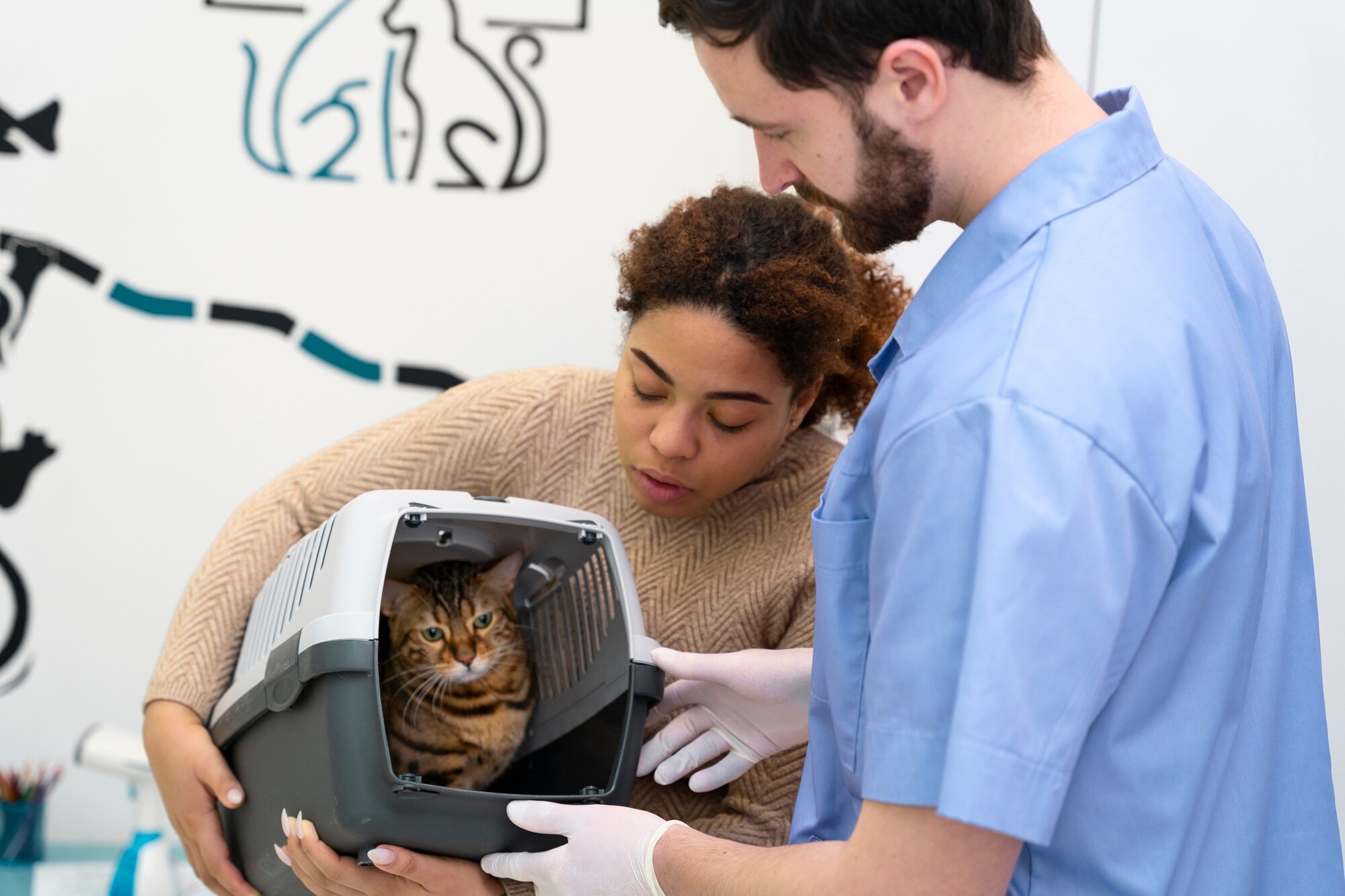Are costly vet bills clawing at your budget? You’re not alone! Many cat owners face behavioral challenges that seem insurmountable. But fear not! We’ve got the purr-fect DIY solutions to keep you and your feline friend happy.
From simple scratching deterrents to litter box strategies, say goodbye to frustration and hello to harmony. Ready to discover how to solve these pet puzzles and enhance your cat’s nine lives? Keep reading for the keys to your kitty’s happiness!
1. Understanding Your Cat’s Behavior

Your cat isn’t just being a diva—every action has a reason. Understanding these reasons is the first step to solving any behavioral issue. Cats communicate through actions, often driven by their natural instincts or unmet needs in their environment.
Observe their habits closely. Are they scratching because they’re bored or anxious? Is your kitty avoiding the litter box because it’s dirty or improperly placed? Step into their paws and you might just find the solutions come naturally.
Consider using feline pheromone diffusers to create a calm environment, often easing multiple behavior issues instantly.
2. The Scratching Dilemma
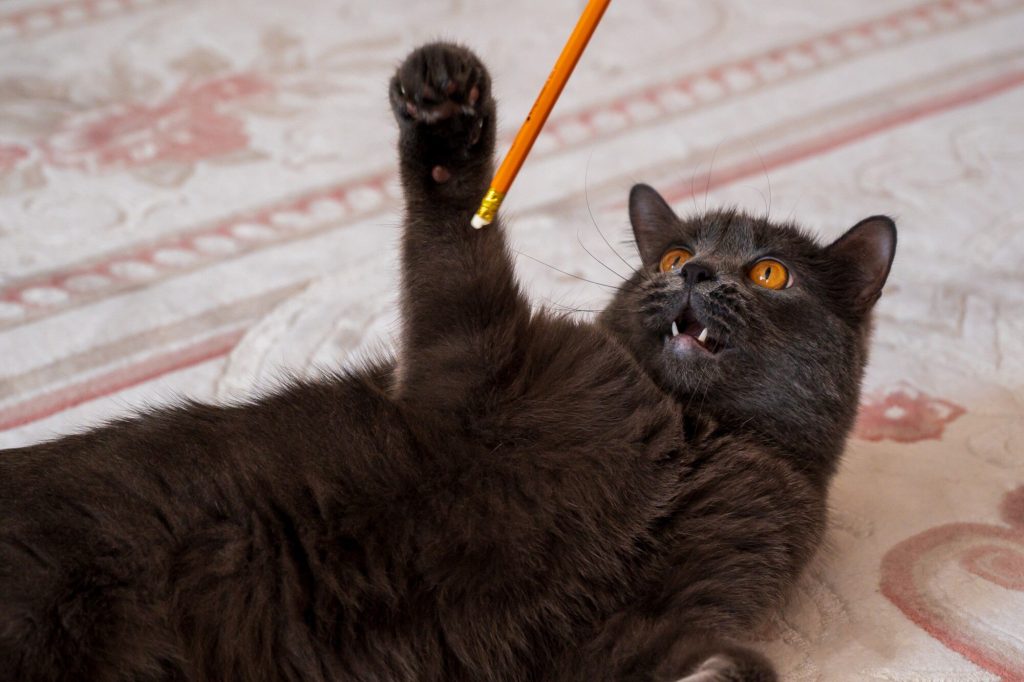
Sick of seeing your furniture shredded? Scratching is innate for our feline friends—it helps them stretch, mark territory, and condition their claws. But there’s hope for your drapes!
Provide enticing alternatives like sisal scratch posts or cardboard scratch pads. Position them in visible, high-traffic areas. Cats need an audience for their handiwork, after all!
Cats also love direction, so show them how to use the scratch post by dragging their paws in a scratching motion. You’ll both be happier for it!
3. The Mystery of the Litter Box

When the litter box becomes public enemy number one, it’s usually due to location, type, or cleanliness. Cats are fussier than they let on, seeking privacy and consistency.
Make sure the box is easy to access yet offers some privacy—no cat wants to feel exposed at their least glamorous moment.
Consistency in cleaning is critical. Avoid perfumed litter and aim for unscented, fine-grain options. Cats have a nose for these things!
4. Feeding Frenzy: When Mealtime Goes Wrong

Does your cat turn their nose up at dinner? Cats can be picky—but not without reason. They often form strong preferences for certain textures or flavors.
Begin by establishing a consistent feeding schedule. Cats thrive on routine. You can also try mixing different textures or warming up wet food to enhance flavors.
Still no success? Try spreading small meals throughout the day or exploring veterinary-approved dietary options to find the right fit for your furball.
5. Solitary Confinement: Handling Separation Anxiety

Does your cat get clingy when you step out? Separation anxiety in cats can lead to destructive behavior or nonstop meowing as a cry for company.
To ease this anxiety, leave a piece of your clothing in their sleeping spot. Start with short absences and gradually extend until your kitty learns you always return.
Treat dispensing toys can be a great distraction, keeping your cat mentally engaged while you’re away. Patience and consistency are your best allies here.
6. Declawed Drama: Alternatives to Declawing
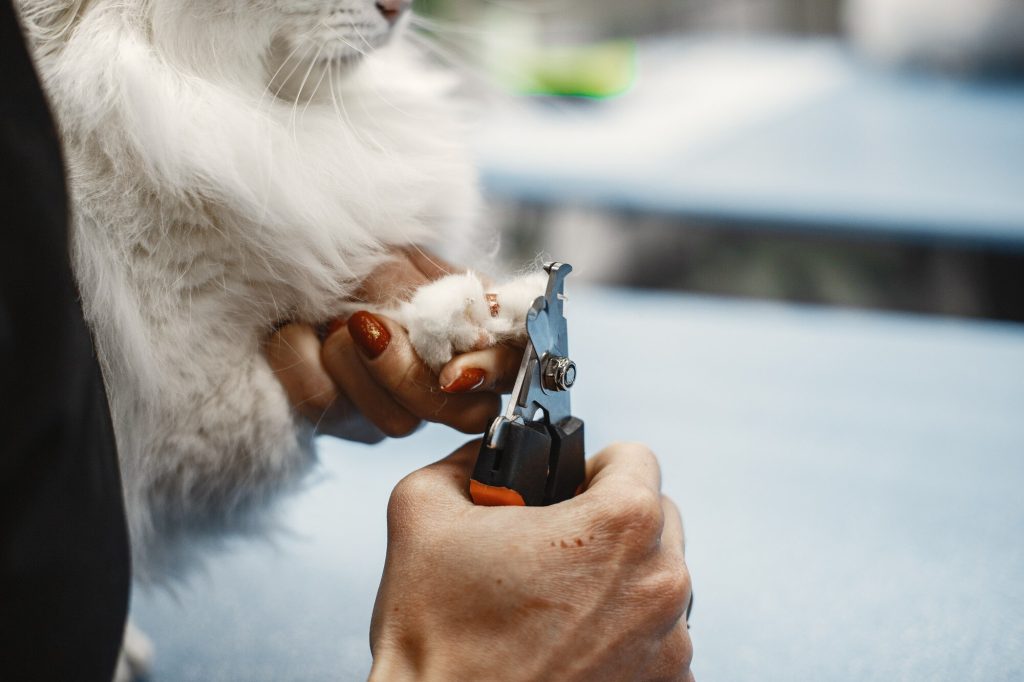
Declawing is a contentious topic, as it involves removing more than just the nail. Fortunately, there are effective alternatives that don’t compromise your cat’s health or behavior.
Introducing claw caps can protect both your furniture and your feline’s natural behaviors. These small, harmless caps can be glued onto your cat’s nails.
Further, frequent nail trims can prevent accidental injury without affecting their ability to climb and play. You can do this comfortably at home with the right tools.
7. Taming the Night: Nocturnal Cat Activity
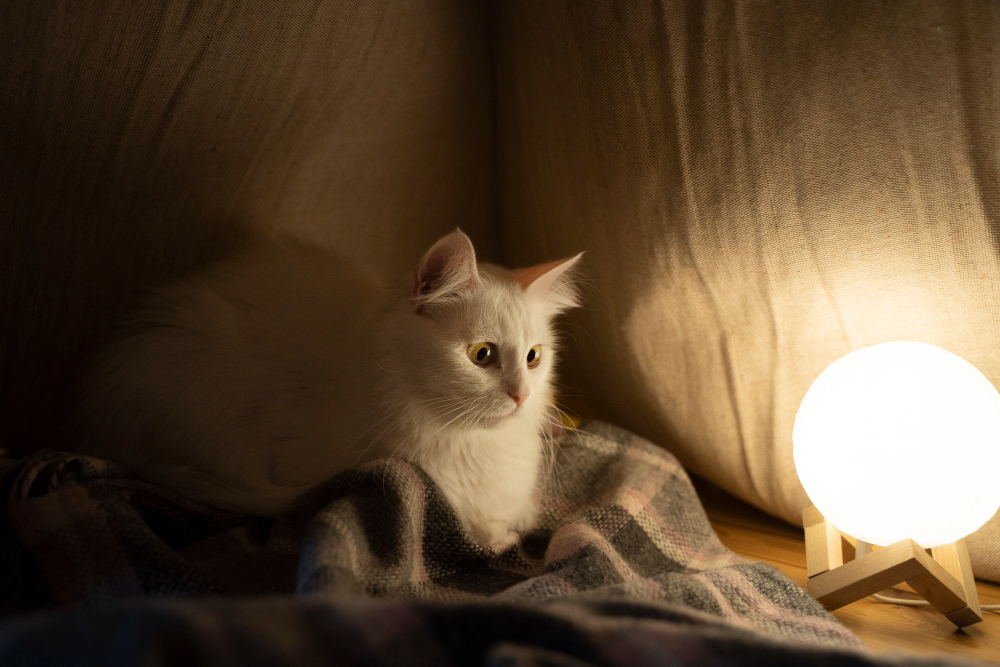
Night prowlings keeping you awake? Cats are crepuscular, active at dawn and dusk, which can mean midnight zoomies! This is driven by instinct more than spite.
Ensure your cat gets enough playtime during the day to burn off excess energy, focusing on enrichment activities that stimulate both their body and mind.
Adjusting their meal schedule to offer a late-night feeding can also encourage a more restful night for both of you, appealing to their post-hunt nap instincts.
8. Curbing the Vocal House Party: Managing Excessive Meowing

A meipetitive meow concert? Cat chatter can be charming—but not when it’s 3 AM! Often, this vocalization is a call for attention or hunger.
Develop a consistent attention routine. Don’t reinforce unwanted meowing with food or play. Instead, make sure they get lots of interaction during your waking hours.
Consider a timed feeder for nocturnal hunger pangs, allowing your kitty to munch when naturally inclined without disturbing your sleep.
9. Introduction of Nipping and Biting: Gentle Alternatives
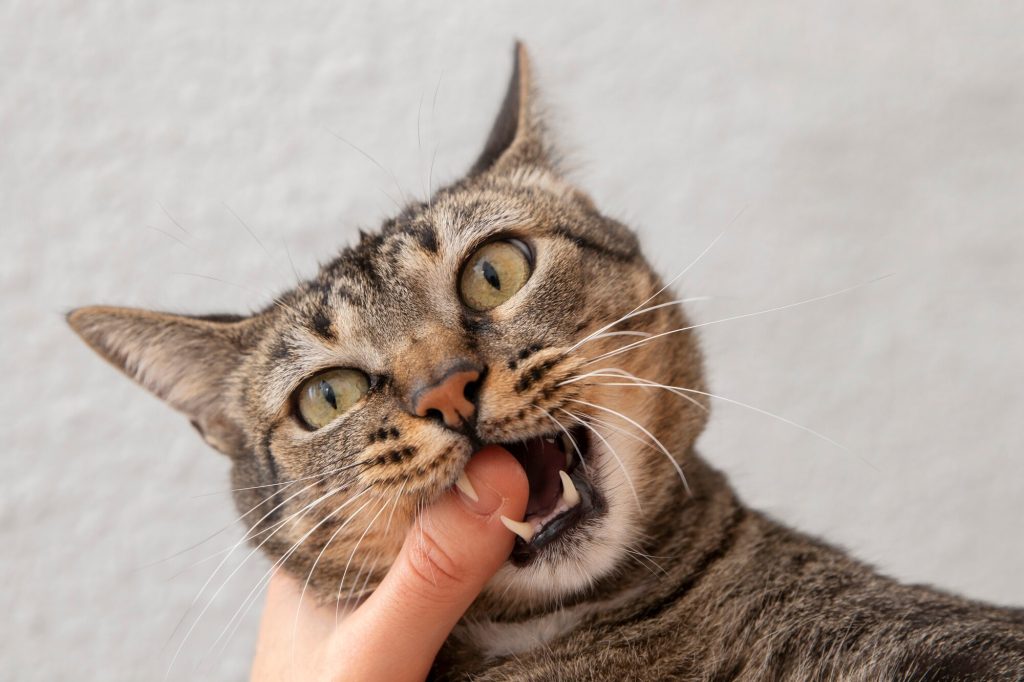
Has your petting session turned into a surprise nibble fest? Cats may bite or nip due to overstimulation or stress signals being missed.
When petting, watch out for signs like twitching tails or sudden tensing—signals to give your kitty space. Always respect their cues.
Introduce toys that mimic prey, offering your cat a safer outlet for play-biting, satisfying these instincts without misunderstanding your intent.
10. Territorial Turmoil: Living with Multiple Cats
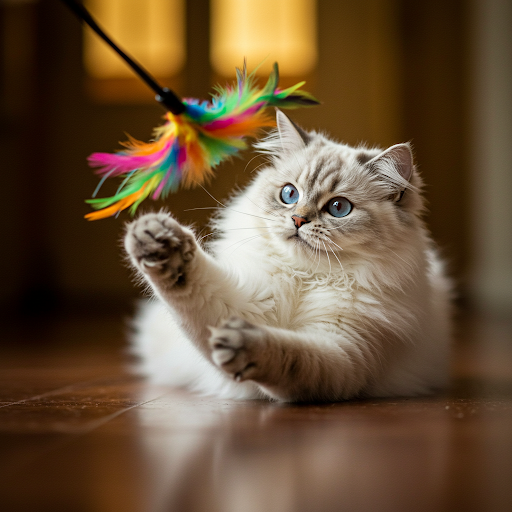
Feline friction with multiple-cat households can lead to skirmishes over space. Understanding their need for individual territories is key.
Provide multiple resources such as litter boxes, feeding zones, and resting areas to reduce stress and competition. Cats need their own ‘zones’ to flourish peacefully.
Encourage shared play sessions with laser pointers or feather teasers, reinforcing positive associations between your cats and promoting inter-cat harmony.
11. The Feline Escape Artist: Cat-Proofing Your Home

Got a Houdini cat constantly seeking adventure beyond your walls? It’s time to cat-proof your home to keep them safely in sight.
Ensure windows and balcony screens are secure. Install locks where needed, and deter door dashes by using barriers like baby gates.
Creating engaging indoor activities, such as window perches or bird-watching stations, can satiate their curiosity without risking an escape.
12. From Feathers to Fur: Introducing Cats to Other Pets

Cat-meets-dog can sound like the setup for chaos, but with care, it can lead to lifelong friendships. Patience is the secret ingredient.
Start with scent swapping—sharing toys or blankets between pets can familiarize them with each other’s scent, easing tensions.
Gradual, supervised introductions in neutral spaces can avert territorial spats. Use pet gates if necessary to conduct safe and controlled meetings.
13. Overcoming Prejudice: Cats and Children
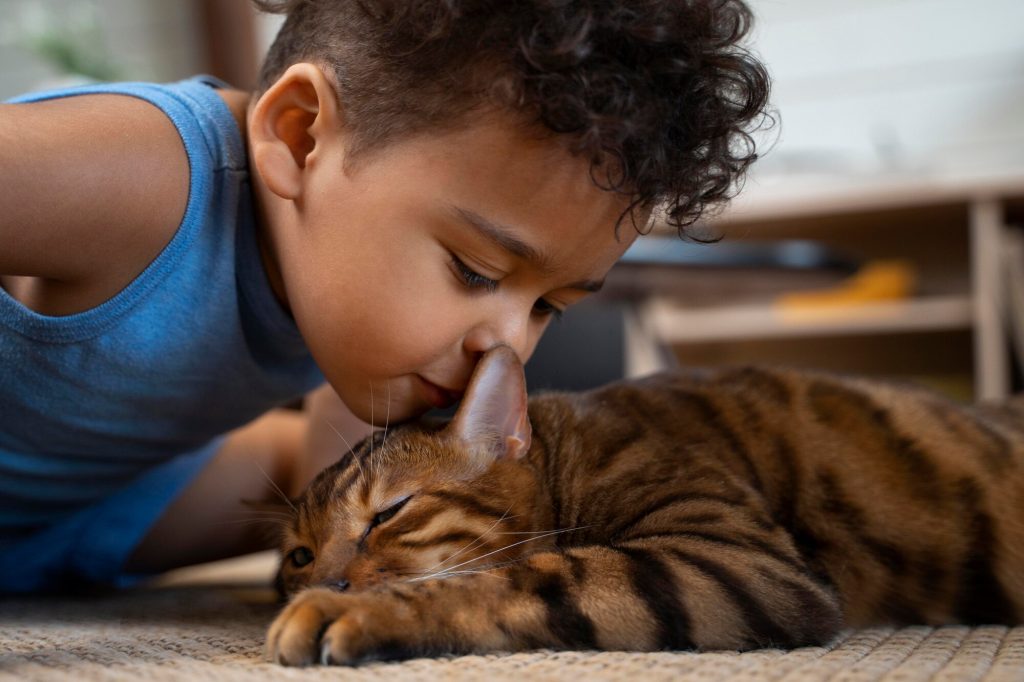
Getting your furry companion and your little human to coexist doesn’t have to feel like an impossible task. Open communication and boundaries are vital.
Teach children to approach cats gently and respect their space. Companion pets are not toys, after all!
Set up a cat-only retreat zone for privacy if interaction becomes overwhelming, ensuring both kiddos and kitties feel secure and happy.
14. Fur and Feathers: Coexisting With Birds

Finding harmony between feline and avian companions requires vigilance and wise habitat choices. They can share a peaceful coexistence.
Ensure bird cages are securely fastened and inaccessible to your cat; high, stable perches provide additional safety.
Providing separate feeding spots and enjoying bird entertainment from afar via a comfortable hygge cat nook can foster coexistence.
15. The Great Outdoors: Indoor Enrichment Alternatives
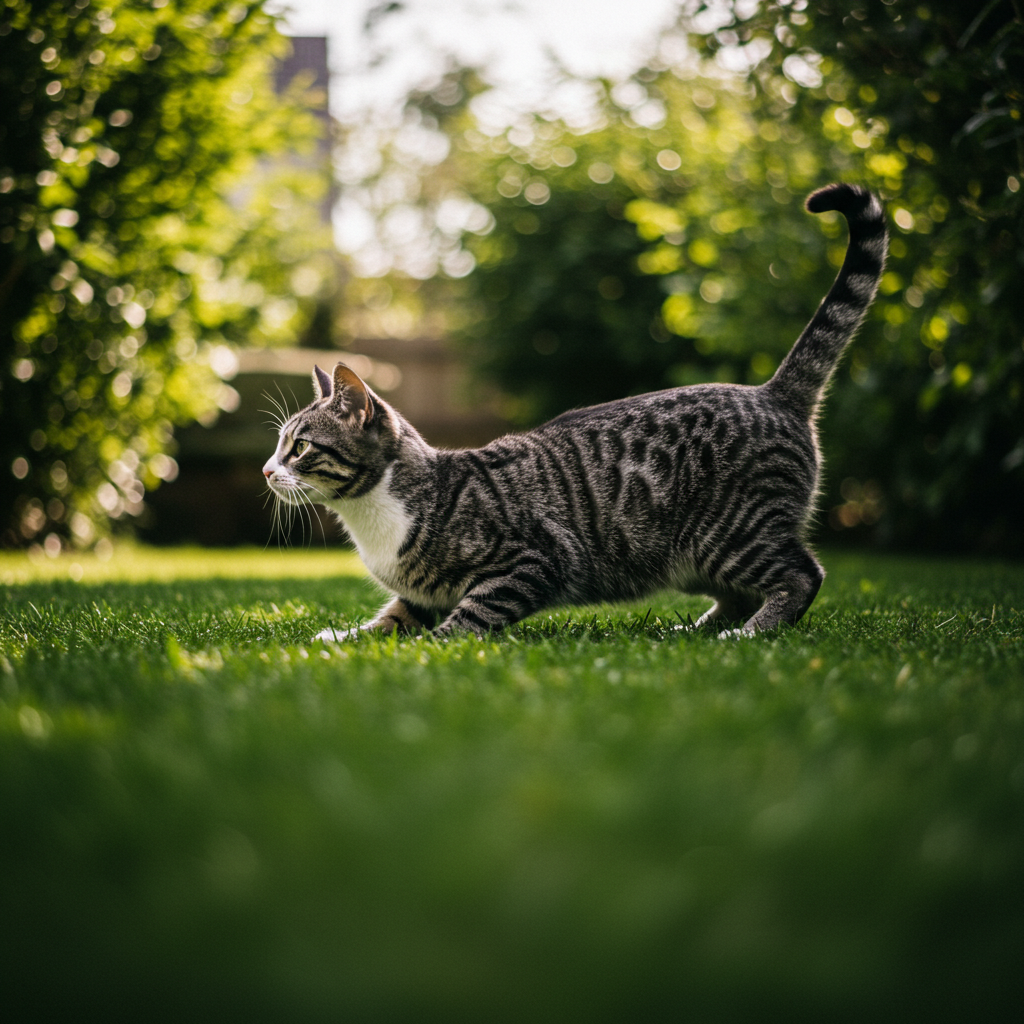
Many indoor cats gaze longingly outside, but the big outdoors is filled with unknowns and risks. Bringing the wild indoors can quell this curiosity.
Cater to your cat’s hunting instincts with treat puzzles or interactive toys. A window-mounted bird feeder is excellent entertainment without added risk.
Consider building or purchasing a catio—a safe outdoor enclosure that offers a taste of adventure minus the hazard!
16. Marshmallow Furniture: Dealing with Couch Potatoes

Your cat seems fused to the couch, hardly batting an eyelid in their sunlit kingdom. Time to turn lazy into lively!
Encourage more movement with interactive play time. Use fishing pole toys or laser pointers for enticing playful endeavors.
Set up diverse climbing structures or hide treats in varying degress around the room for extra intrigue, promoting stimulation and curiosity.
17. Final Thoughts: Engaging With Your Feline Companion

By understanding and addressing your cats’ needs, you not only curb unwanted behaviors but strengthen your bond, creating a loyal and loving companionship.
These DIY solutions not only prevent costly vet visits but also turn common struggles into rewarding connections.
Feel free to share your experiences and insights. Together, we can build a thriving community of happy cats and content owners. Just remember to savor every purr!

